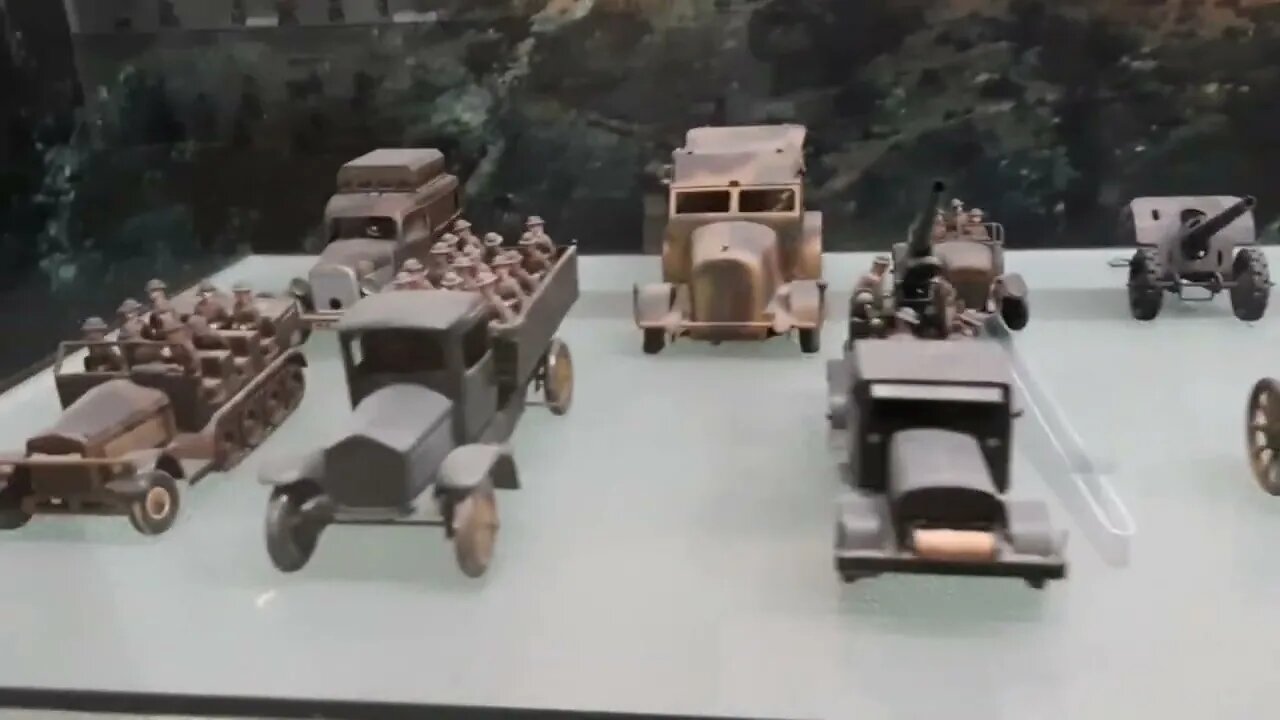Premium Only Content

Double Statue two face statue, cavalry, british army, french army and japan army in salarjung museum
Double Statue two face statue, cavalry, british army, french army and japan army in salarjung museum
The Double Statue of Mephistopheles & Margaretta : Salar Jung Museum
Children Gallery
The objects on display in the Children’s section of the museum are a testimony to the vast range of interests of Salar Jung III in collecting objects of assorted nature. The objects assimilated by him during his childhood are also on view in this gallery. The exhibits housed in the section provide informational education to children who come to visit the gallery.
The gallery has a good number of bronze figures, porcelain objects, musical boxes, marble sculptures and toys from different parts of the world. Geisha dolls from Japan, a functional train-set from England and a set of the seven dwarfs from ‘Snow White and the seven dwarfs’ are a some of the assortments seen in this section. The gallery not only attracts the youth but also the elderly, a huge collection of toy soldiers arranged to give the viewer a fair idea of warfare during the Second World War. Apart from artillery and infantry, the gallery has toys depicting the Air-force, tanks and medical staff.
Exquisitely modelled wild animals in bronze and metal such as Elephants, Rhinos, Tiger etc. are displayed. Clay models of domesticated animals, soap-stone carvings from Korea and Japan, objects decorated with Mother-of-pearl, sculptures depicting the different breed of dogs in metal and porcelain are found in the gallery.
The collection of fire arms at the museum is rare and varied
The first weapons used by the Stone Age man were knives, axes, spears fitted with sharpened flints. Around 1300 BC iron swords and shields showed up. Cavalry first appeared in about 1300 AD on the battle fields of western Asia and the horse man, armed with sword and lance could run down the infantry easily.
Challenge to the supremacy of Cavalry came first, from long bow and next, cross bow and next, fire arms which date from 1326 A.D. The first firing mechanism was matchlock, introduced in the 15th century. It gave way, in 17th century, to the flint lock, in general use until 1840. Muskets with rifled barrels came in 19th century. With the invention of percussion cap (a small copper cap or cylinder) which also made possible the use of cartridge, revolver became possible. The fully automatic rifle appeared in 1908. Machine gun of the modern type followed in later half of 19th century.
The Salar Jung Museum’s collection of arms comprises 1,236 traditional weapons and 188 fire arms. Besides India, the Museum’s arms come from countries like England, France, Germany, Belgium, USA, Turkey, Persia and China. Majority of them show decorations done in enamelling, damascening, engraving, jewelling and embossing.
In the mixture of Museum’s swords, daggers, guptis (concealed swords), shields, battle-axes, spears, and armour parts like helmets, armguards, coat of mail and char-aina (four protective metal plates) the visitors will find a variety of materials and designs used.
The Indian rulers whose names are inscribed on the swords and daggers are the Mughul emperors Humayum, Jahangir, Shah Jahan, Aurangazeb and Bahadur Shah and Qutub Shahi rulers Abdullah Qutub Shah and Sultan Abul Hasan Tana Shah. About English swords, mention may be made of a sword presented in 1875 by the Prince of Wales to Sir Salar Jung I (1829-1883). The blade was manufactured by Wilkinson in London. A curved sword is a present to Sir Salar Jung I from Viscount Kitchner, the then commander-in-chief of Indian army. The blade is beautifully etched.
The collection of fire arms is equally rare and varied. The flint-locks, match-locks, repercussion-locks, muzzle-loading, breech-loading and automatic guns, blunderbusses, ordinary pistols and revolvers ranging from 17th century to 20th century are interesting. Well-known gun manufacturers represented in the collection are: Smith and Wesson, Samuel Rock, Devisme A Paris, Wood and Sons. The pistol bearing inscription referring to the warrior prince Tipu Sultan is a proud possession of the Museum.
-
 2:11:56
2:11:56
megimu32
5 hours agoOTS: With Great Power: Every Spider-Man Movie Unmasked w/ @thisistheraygaming
27.6K3 -
 2:38:48
2:38:48
WickedVirtue
4 hours agoSailing w/ The Crew
31K1 -
 4:29:37
4:29:37
Meisters of Madness
7 hours agoThe Finals with Redd
33.3K1 -
 1:27:11
1:27:11
Omar Elattar
12 hours agoThe Dating Expert: "I've Helped 4,000 Men Find LOVE!" - The #1 Alpha Trait Women Secretly Crave!
51.1K1 -
 LIVE
LIVE
VOPUSARADIO
12 hours agoPOLITI-SHOCK! "END THE FED, END THE LIES & END THE DEEP STATE ONCE AND FOR ALL"!
285 watching -
 1:43:38
1:43:38
LumpyPotatoX2
7 hours agoRumble Creator Round-Table - Let's Talk About It
34.8K2 -
 32:38
32:38
The Mel K Show
10 hours agoMel K & Dr. James Thorp, MD | Sacrifice: The Targeting of the Most Vulnerable | 7-24-25
37.5K13 -
 1:12:41
1:12:41
Donald Trump Jr.
9 hours agoFrom Crypto to AI, There's a New American Energy Revival, Interviews with Asher Genoot & Sen McCormick | TRIGGERED Ep.261
165K61 -
 52:11
52:11
ZeeeMedia
12 hours ago"Meaningful Deep State Prosecution" ft. Robert Barnes | Daily Pulse Ep. 73
45.2K13 -
 8:10
8:10
MattMorseTV
9 hours ago $4.19 earnedThey just CAVED.
34.3K26